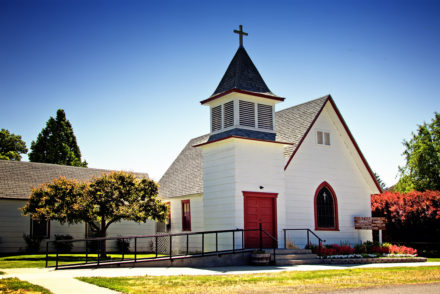The missional checklist:
- Lottie Moon Christmas offering
- Annie Armstrong Easter Offering
- Janie Chapman Offering for State Missions
- Prayer for church plant In Central Asia
- Support for the local association
- Prayer for the church plant in Central Asia
- Prayer for the church plant in New York
- Mission to the local community
A few years ago we conducted an interesting project. We obtained a local map of our greater community and drew three circles around our church—a one-mile circle, a three-mile circle, and a five-mile circle. Next we marked the residence of every church member and regular participant on that map. What we discovered raised a serious question about our claim to be a mission-minded church. Eighty percent of our membership and regular church attendees lived outside the three-mile circle. Less that 15% lived inside that circle. What we discovered about ourselves was that our mission plan overlooked the mission field down the street.
Jesus had drawn similar circles for the Apostles. They were gathered in their final meeting before the Ascension. He said:
But, you will receive power when the Holy Spirit has come upon you,
and you will be my witnesses in Jerusalem and in all Judea and
Samaria, and to the end of the earth.
Acts 1:8, ESV
Over the years this verse has been a reference point for defining mission in a local church. Some have interpreted the verse to provide a progressive, developmental schemata for the outreach of the church:
Priority One: Jerusalem, or the local community;
Priority Two: all Judea, the national scene;
Priority Three: Samaria, the places hard to reach;
Priority Four: the world.
Personally, I’ve never viewed his instructions as a step-by-step advancement of church mission but rather the scope of mission in their unique first century locale. What is interesting in the Acts of the Apostles, however, is how their energy and resources were dedicated to reaching their local mission field before they were propelled by persecution to move on. Preaching and teaching in Jerusalem became their passion. When they were scattered to the regions of Judea and Samaria, the Apostles stayed to continue their local assignment while others ministered in the surrounding areas.
After the mapping exercise we asked the data information experts at the South Carolina Baptist Convention to provide demographic information about the people who lived closest to our church. They gave us census statistics that defined them in just about every category you can imagine—households, marital status, ages, education, income, and more. This material helped define what would be a mission goal for the next ten years. We wanted to reverse the numbers so that 80% of our church membership and attendance would be from within the closest circle to the church, and 20% would be from beyond.
Sounds simple enough, right? Well, with one exception. The greatest portion of our local population lived in the eleven apartment complexes that surrounded our church. And, for the most part, we were not welcomed into them.
Reaching the local apartment community became an intentional mission plan for the next ten plus years. After analyzing the demographic information provided by the South Carolina Baptist Convention staff, we studied the specifics of the generational cohorts around us. Then, we implemented mission initiatives that would bring the neighborhood to us.
These included, over the ten years:
- Start-up of Celebrate Recovery ministry every Friday evening.
- Start-up of the Northwood Community Counseling Center.
- Seasonal events that would appeal to the age cohorts living closest to the church: Fourth of July fireworks; Christmas extravaganza; aggressive women’s and men’s ministry; a motor-cycle ministry; children’s sports and ministry events.
- Differentiated worship experiences aimed at the closest age groups.
- Seminars and training events for the age groups noted in the study.
An interesting thing happened. Within those ten years most of the apartment complex managers were asking us to use their facility for Bible study and teaching opportunities. Evidently connecting their inhabitants to the community proved to be good for business.
All too often we do a missional checklist like the one pictured above without a line item for what must be our first assignment: the mission field down the street. The reason? It may just be that the mission field down the street is the one that requires our personal attention and not just a few bucks in the offering plate.
Jesus told a parable. In it the master of the house told his servant, ‘Go out to the highways and hedges and compel people to come in, that my house may be filled” (Luke 14:23, ESV).
That begins in the mission field down the street.






No Comments